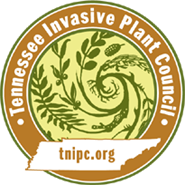Pyrus calleryana Dcne.
Bradford Pear, Callery Pear| Threat Level | Category |
|---|---|
| Established | Tree |

Description
Height
Callery Pear grows to 40 feet (12.2 m).Bark
Callery pear trees have scaly gray-brown bark and branches with numerous short lateral twigs.Twigs
Twigs are reddish-brown to gray and stout, with relatively large, fuzzy, light tan-gray terminal buds on the spur shoots and branch tips.Leaves
The leaves are alternate, simple, 2 to 3 inches (5.1-7.6 cm) long, petiolate and shiny with wavy, slightly-toothed margins.Flowers
Flowering occurs early in the spring (April to May) before the leaves emerge. The showy white flowers are 1 inch (2.5 cm) wide and malodorous.Fruit
Fruits are round, 0.5 inch (1.3 cm) in diameter, and green to brown in color.Images
Photo: Chuck Bargeron, University of Georgia, Bugwood.orgMore images of Pyrus calleryana
Life History
Callery pear, or Bradford pear, is an ornamental, deciduous tree that is a member of the Rosaceae Family. Bradford was not self-pollinating and thus no fruit or seeds were produced. However, with time other callery pear cultivars were developed and introduced into the nursery trade. With several cultivars in circulation, cross-pollination could take place and the trees began to produce fruits and seeds. Pyrus is the Latin name for pear; calleryana is named after J. Callery, a French missionary to China who collected the original tree and brought it to the Western World.Callery Pear is similar to the common European pear, Pyrus communis, but can be distinguished by its large thorns, which are usually present, and by its smaller fruits with the calyx absent on the fruit. Pyrus communis may or may not have thorns present. The fruits are larger than those of Callery Pear, and the calyx is persistent on the fruit.
Habitat
Some non-sterile cultivars of this species have escaped and are invading natural areas throughout the eastern United States. Callery Pear trees are shallow-rooted and will tolerate most soil types including clay and alkaline, are pest-and pollution-resistant, and tolerate soil compaction, drought and wet soil well.Origin and Distribution
Callery pear is native to China. In 1918 seed was brought to the United States for potential use as rootstock for cultivated pears. The “Bradford†variety of pear, which produced sterile fruits, has been widely planted throughout the United States since the early 1900s, but recent cultivars, bred to reduce the tendency of the tree to split in snow or high winds, have produced viable seeds and escaped to invade disturbed areas. The spread of callery pear is by seed, apparently dispersed by birds, and perhaps also small mammals, that consume the small hard fruits and excrete the seeds when they defecate. Other States Where Invasive: AL, GA, SC, TN.Sources
Rhoads, A. F. and T. A. Block. 2000. The Plants of Pennsylvania, An Illustrated Manual. University of Pennsylvania Press, Philadelphia.Management Recommendations
Mechanical Control
Hand Pulling: Seedlings and shallow-rooted plants can be pulled when soil is moist. Small trees need to be dug up or pulled out using a Weed Wrench®, ensuring removal of the root system.Girdling: Trees can be girdled during the spring and summer, by cutting through the bark all around the trunk, about 6" above the ground.
